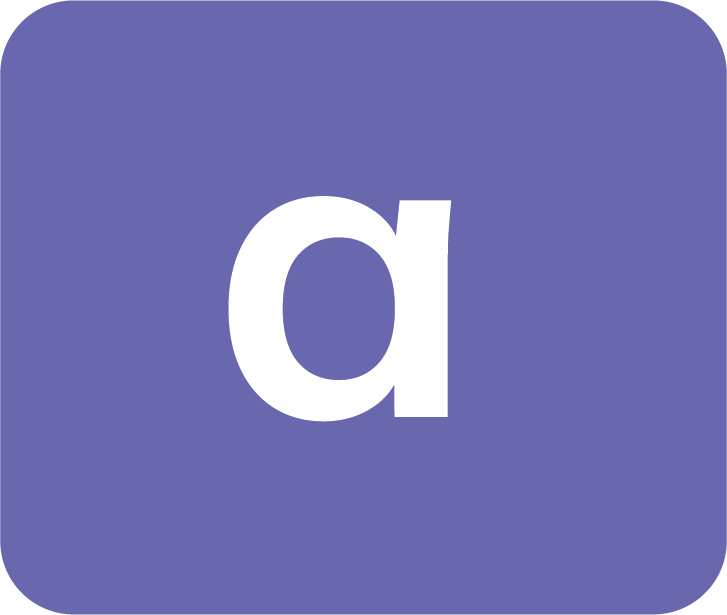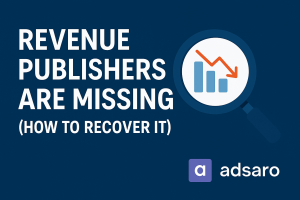In the world of digital advertising, measuring success goes beyond just clicks and conversions. Two key metrics often dominate discussions: Time on Page and Ad Impressions. Both provide valuable insights, but their importance varies depending on whether your focus is engagement, monetization, or SEO.
Understanding the difference between these metrics can help publishers and advertisers optimize their strategies. While Time on Page highlights how engaging and valuable content is, Ad Impressions measure visibility and reach. But which one should you prioritize for better ad performance? In this blog, we’ll dive deep into the significance of both metrics, their impact, and how to strike the perfect balance to maximize results.
What is Time on Page ?
Time on Page refers to the duration a visitor spends on a webpage before leaving. It is an essential engagement metric that helps publishers and advertisers gauge content effectiveness. This metric is especially important for publishers who rely on user engagement to measure content success.
Why Time on Page Matters ?
- Higher Engagement: A longer time on page often indicates that users find the content valuable and engaging. If a visitor spends more time reading an article or exploring a website, it signals strong content quality.
- Improved Ad Interaction: The longer a visitor stays on the page, the higher the chances they will notice, interact with, or click on ads. Advertisers looking for engagement-based results prefer audiences with longer time on page.
- SEO Benefits: Search engines like Google use time on page as a ranking factor. Pages with longer session durations tend to rank higher in search results, leading to more organic traffic.
- Better Conversion Potential: If users are spending more time engaging with content, they are more likely to take the desired action, such as signing up for a service or making a purchase.
Challenges with Time on Page
- Not all time spent on a page results in ad interactions. A visitor may remain on a page but ignore the ads entirely.
- Measuring time on page accurately can be difficult. Users may leave a tab open without actually engaging.
Understanding Ad Impressions
Ad Impressions measure the number of times an ad is displayed on a webpage, regardless of user interaction. This metric is crucial for advertisers who focus on visibility and brand awareness rather than direct engagement.
Why Ad Impressions Matter ?
- Monetization: Websites that generate high impressions can attract premium advertisers and command higher CPM (Cost Per Mille) rates, making ad impressions a primary revenue driver.
- Brand Awareness: Even if users don’t click on an ad, frequent exposure to a brand can increase familiarity and recognition. This is especially useful for branding campaigns.
- Scalability: The more impressions a website generates, the broader its audience reach. High ad impressions indicate that a website has a large or frequently returning user base.
- More Opportunities for Clicks: A higher number of impressions means a greater chance that users will eventually engage with an ad, even if the click-through rate (CTR) is low.
Challenges with Ad Impressions
- A high number of impressions does not necessarily mean high engagement. Many users may see an ad but choose to ignore it.
- Some advertisers prioritize conversions over impressions, meaning a high impression count without conversions may not be valuable.
Time on Page vs. Ad Impressions: Which One Matters More?
The importance of these metrics depends on the goals of the publisher or advertiser. Let’s break it down:
For Publishers Focused on Revenue:
- High ad impressions are crucial since they directly impact ad revenue, especially for CPM-based advertising models.
- However, balancing ad placement and content quality is essential to keep users engaged while maximizing impressions.
Advertisers Looking for Engagement:
- Time on Page is more valuable because it signals user interest and increases the likelihood of conversions.
- Advertisers looking for meaningful interactions or purchases would prefer longer session durations over sheer impression counts.
For SEO & Content Strategy:
- Time on Page plays a critical role in SEO rankings. Longer page sessions indicate high-quality content, improving organic search performance.
- Ad impressions have little to no direct impact on SEO but can contribute to monetization strategies.
Balancing the Two Metrics
To maximize both ad revenue and user engagement, publishers should consider the following strategies:
- Optimize Content for Engagement: High-quality, informative, and engaging content naturally increases time on page and improves ad interaction.
- Strategic Ad Placement: Ads should be placed in visible yet non-intrusive locations to maintain a positive user experience.
- A/B Testing for Best Results: Experiment with different ad formats, placements, and content strategies to determine what works best for both engagement and impressions.
- Use Heatmaps and Analytics: Tools like heatmaps and session tracking can help identify where users spend the most time and how they interact with ads.
Conclusion
Neither metric is universally superior. Instead, Time on Page and Ad Impressions should work together to optimize ad performance. If publishers prioritize engagement, they should focus on increasing time on page while maintaining a balance with ad impressions. On the other hand, advertisers should align their strategies with their goals—whether it’s brand awareness through impressions or conversions through engagement.
By striking the right balance, publishers and advertisers can maximize revenue while maintaining a positive user experience.








Leave a Reply